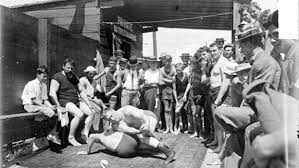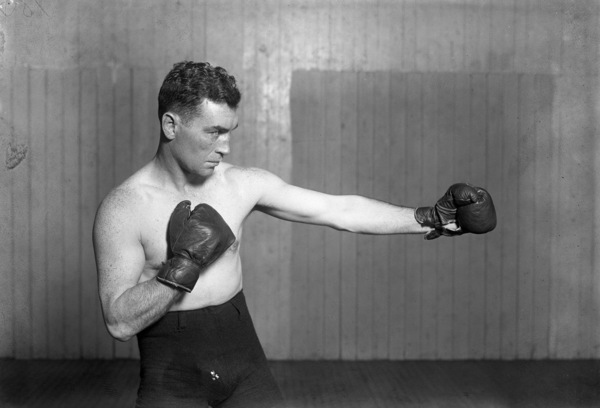I am often asked what defines
Frontier Combat or Old School Rough ‘n’ Tumble Fighting.
A damn good question.
The answer can prove elusive
at first blush as these myriad arts/practices/skills can be so scattered in distance,
influences, environment and application it bears little resemblance to [in
comparison] closed systems that one finds in traditional arts or boundaried
combat sports.
If there can be a
single characteristic of an actual Frontier in the geographical sense it is
that, by definition, it lies beyond the border. It is a
remove from the acceptable or codified stricture.
Be this West of the Mississippi
in the 17th century or the interior of the Congo of the 19th-century,
what is beyond the reach of law or organized government was a Frontier, ripe
for the intrepid to venture and mingle with whatever indigenous forces they met
[environmental or tribal.]
That geographical definition
holds for Frontier Fighting as well, it lies beyond the border. It is a remove
from the acceptable or codified stricture.
Old Man
Mark’s Idiosyncratic Boundaries
Admittedly, to focus
any effort, it is wise to have targets and a bit of direction so that our wanders
in the Frontier Wilderness are a bit less meandering.
Also, admittedly, my interests
and Wanderings may not match another’s definition but…after lengthy immersion, study,
experimentation, and hell, living much of this, I offer my own definition of
Frontier Fighting.
The Physical
Borders of Frontier Fighting
First, I do not confine
to the American West, or even simply the North American Continent itself.
A geographic frontier moves
as settlement and “civilizing” forces follow the intrepid who made the way safe.
Borders and frontiers
were always on the move.
The Wild Frontier in
the New World was the East Coast itself until settlement took root, then it was
the Allegheny Valley, then it was beyond the Ohio river, then…on and on.
Frontiers
advance ahead of tameness.
In 1936, George
Goodchild offered a definition of “Western” stories that strikes me as a fine template
for defining the Frontier. Here he is referring to a literary movement and
phrases according to the acceptable dictates of the day, but it stands in just fine
for the broadness of the frontier idea.
“For the purpose of
this volume I have deliberately widened the scope of its interest…in my view ‘Western’
has ceased to mean Western in the geographic sense, I can scarcely be accused
of inconsistency. Since every geographical sense must be West of something. I
feel I should be forgiven, so long as the stories do succeed in capturing the
sprit of adventure and enterprise---not to mention romance—in the open air,
where life is largely in the raw, and ‘men are men’ as the Western writers say.”
It is with this very expansive
definition in mind that “West of somewhere” can, to my mind, be a tasty tactic
or two culled from an Australian Bush Ranger to aquatic combat tactics from
Polynesian Tribes to…well, as long as it is a Frontier with no smack of “Well
stand aside heathen, the civilized ones are here, let us show how it is done.”
Old Man
Mark’s Temporal Boundaries
Also, of concern is just
when a Frontier ends. When does the “Wild and Wooly” element morph into a simulacrum
of what was”?
When does the original
and brutal subak of Korea morph into the early hard-slamming Tae Kwon
Do, morph again into the not quite the same Tae Kown Do of today.
FYI-This Is not a knock-on Tae Kwon Do. It an
illustration of civilizing influences. Have a gander at TKD competition from
the 90s and compare it to now.
A mere 30 years have wrought
many a softening change. So much more so before even the 90s version of TKD.
TKD is a mere example
here, it seems to my eye most endeavors started with an eye on grit and grim
effectiveness, then go through a civilized sportive stage that is still rough,
and then through a commercial “Get as many asses in the dojo, gym, ring,
cage, on the mat, in the Box” as you can period that adds further water to
stews that were formerly too spicy for general palates.
To ensure that I am
not “picking on” what is considered an Eastern or traditional art, one of my
beloved sports, boxing, has been subject to the same civilizing forces.
This is boxing authority
O.F. Snelling writing in 1972.
“Many still look
back to the 1920s, 30s and 40s as the heart of boxing’s history. The sport was
not so highly organized, and the fighters risked greater injury for lower rewards,
but there were fewer pointless matches, less hype and hot air, and there was an
honest endeavor and grittiness that is often missing today.”
I must say, I concur
with Mr. Snelling.
I use his cut-off of
the 40s for both boxing and wrestling and…a myriad other adjunct endeavors—more
on that in a minute.
More Than
Early Boxing, More Than Early Wrestling
Of course, Frontier Fighting
and Rough ‘n’ Tumble are more than boxing and wrestling. It is all of the
vicious mano y mano weapon in hand or no that was conducted in lawless areas.
Lawless regions that persisted
far longer than many assume.
Example: When did the Wild West end?
With the last cattle-drive?
The advent of the motor car?
Well, according to
many an historian [Paul Wellman among them] and many an authority of the genre itself
[Pulitzer Prize Winning Larry McMurtry] the end of the Wild West is not till
the end of the wild and wooly days of the Depression Era gangsters that rode roughshod
over America’s Great Plains and Southwest using motorcars instead of horses, and
Tommy guns in place of six-guns.
I use Mr. Snelling’s
1940s estimation for the sport side of things, and the historians’ 30’s estimation
for the meaner side of things.
More Than Fighting:
The Iodine Club
There are many directly
overlapping skills, practices, endeavors that were once considered part and
parcel of fighting or general all ‘round ruggedness and preparedness.
Separating these tasks
or ignoring them completely strikes me as a disservice to true Old School
study. These additional skills were not considered auxiliaries or electives to
be sampled, skipped or ignored—there were assumptions of “We all do these things,
don’t we?”
It is for this reason
of allied arts that other early endeavors are wisely included in study.
For example,
The Iodine Club.
In early motion pictures,
silent through the early sound era, lo and behold CGI was not to be found.
A premium was placed on
ability. Not merely looking impressive, one must be impressive.
Stunt men and women of
the day were recruited from rough and tumble endeavors to provide the needed
screen thrills with no risk to stars.
They were recruited
from rodeos, circuses, returning World War I pilots, early open wheel drivers,
in short, any endeavor where life was risked, living was large, and the civilizing
forces had not smothered the wild-assed nature of the given pursuit.
Many of these early
stunt performers referred to themselves as The Iodine Club for their copious injuries.
Some stunt players
were specialists but many, well, let’s leave it to early stunt performer Joe Bonomo
who worked in Hollywood circa 1920s to mention what was on the table.
He insisted that many
a good performer had the following in their bag of tricks, “[They must be] a
wrestler, tumbler, acrobat, strongman, boxer, and judo expert.”
Others added that one must
be able to ride, swim, hand balance, and…it goes on and on.
Many early allied
arts, from stevedore to keelboatman, to wrangler, to pearl diver had their own
take on some aspect of combat in addition to their own rough n tumble professional
expertise.
To Corral
Effectively, I see Frontier
Fighting and rough ‘n tumble living and The Black Box Project as All-Frontier
inclusive, spanning from the earliest frontiers to an approximate early 1940s
cut-off and including any early sport or occupation that had not been civilized
and attracted a rough and rowdy rough and tumble element.
It is within these borders
that we find an astonishing wealth of practical value regarding Frontier Fighting
and Rough ‘n’ Tumble living.
It is through this
syncretism of seemingly disparate elements that the rich vein of knowledge can truly
be experienced.
[For more Rough& Tumble history,
Indigenous Ability hacks, and for pragmatic applications of old school tactics
historically accurate and viciously verified see our RAW/Black Box Subscription
Service.]
Or our
brand-spankin’ new podcast The Rough and Tumble Raconteur available on all
platforms.




Comments
Post a Comment